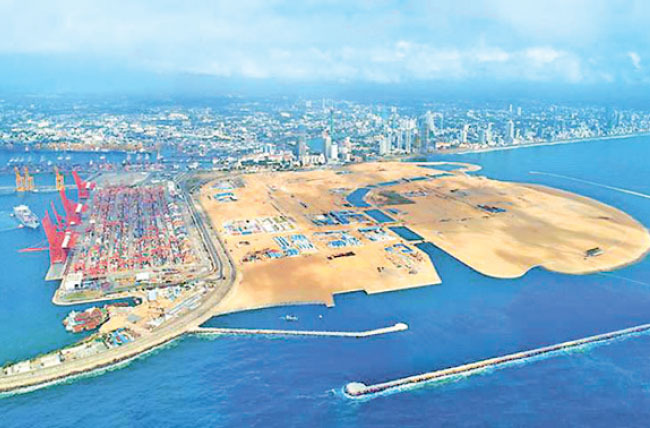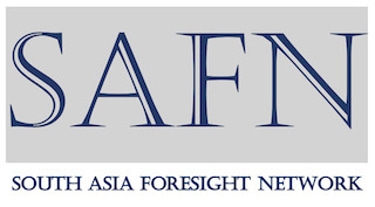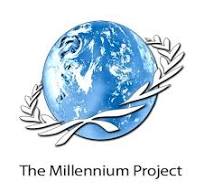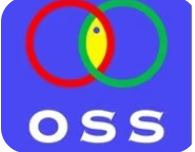In a Multipolar world Nonalignment is Sri Lanka’s pragmatic option
The age of the unipolar global order is gradually fading. As power becomes more evenly distributed across the world, countries are broadening their relationships – engaging with major powers as well as smaller states, both within and increasingly beyond their own neighborhood. This shift has prompted a reconsideration of Cold War security arrangements, particularly in regions where geopolitical competition is intensifying. In the Indo-Pacific, for instance, the reshaping of global power dynamics has had a direct bearing on how states – large and small – approach diplomacy, defense, and economic engagement.
COMMENTARIES
Shakthi De Silva
7 min read


The age of the unipolar global order is gradually fading. As power becomes more evenly distributed across the world, countries are broadening their relationships – engaging with major powers as well as smaller states, both within and increasingly beyond their own neighborhood. This shift has prompted a reconsideration of Cold War security arrangements, particularly in regions where geopolitical competition is intensifying. In the Indo-Pacific, for instance, the reshaping of global power dynamics has had a direct bearing on how states – large and small – approach diplomacy, defense, and economic engagement.
Although this Op-Ed was draftedprior to the Australian federal election, one trend is undeniable: foreign policy has taken center stage in Australia’s political debate. Since 2017, much of the political conversation focused on the need to stay vigilant in light of China’s growing assertiveness in the Indo-Pacific and its influence on Australia’s domestic politics. This election cycle, however, has seen a shift in focus. Now the concern worrying many Australians – in addition to Beijing’s behavior – is the reliability of Australia’s traditional partner,prompting both sides of the political aisle to advocate for a substantial increase in defense spending.
Australia is not alone in this trend of‘re-evaluation’. Lingering tensions over Japan’s imperial past and unresolved border disputes deeply affected its ties with China and South Korea for decades. Even so, a ministerial meeting in March this year saw the three Governments agree to continue cooperation through the Trilateral Cooperation Secretariat. This signals a quiet but notable shift in regional diplomacy – one where shared economic interests are beginning to outweigh historical grievances. To what extent this will bring about a recalibration in ties, particularly between China and Japan, is debatable,but the trend is unmistakable.
It is in this context that a few scholars have raised questions over the utility of nonalignment as a guiding principle for Sri Lanka’s foreign policy. As the world becomes more multipolar, some argue that nonalignment has lost its relevance. Others believe that clinging to this policy weakens Sri Lanka’s agency, hindering the nation from seizing opportunities to align with rising economic powers. A few assert that economic and security alignment has previously enabled small island states to develop rapidly, and that Sri Lanka must follow suit.
Critical engagement with each of these arguments, however, exposes several flaws in their reasoning. Is alignment the way forward in a multipolar world? When one uses nonalignment in the context of Sri Lanka, the underlying assumption is that the nation is walking a tightrope between India and China – seeking to deepen economic and political ties with both, while carefully avoiding any actions that might undermine New Delhi’s security concerns.J.R. Jayewardene’s time in office stands as a stark reminder of what happens when Sri Lanka strays from this delicate balancing act.His attempt to balance against New Delhi by drawing closer to the West only heightened India’s concerns, leading the latter to become more, not less, involved in Sri Lanka’s internal armed conflict.
Does nonalignment weaken Sri Lanka’s chances of deepening ties with its neighbors? On the contrary, it was when Sri Lanka espoused a nonaligned foreign policy that it joined the Belt and Road Initiative (BRI), becamea dialogue partner of the Shanghai Cooperation Organization (SCO), applied for membership in the Regional Comprehensive Economic Partnership (RCEP) – the world’s largest free trade area, signed Free Trade Agreements with India (ISFTA), Pakistan (PSFTA), Singapore (SLSFTA) and Thailand (SLTFTA) while finalizing ones with China, Indonesia and Vietnam. This foreign policy approach also presentedopportunities for Sri Lanka to participate in a number of Indo-Pacific nations’ naval exercises including those hosted by India (MILAN), USA (CARAT and RIMPAC), Australia (KAKADU), Indonesia (KOMODO), Singapore (IMDX) and Pakistan (AMAN). In this regard, reports that the Dissanayake government cancelled a joint naval drill between Pakistan and Sri Lanka owing to objections by India demonstrate the cost of privileging one relationship at the expense of others – in this case, that of a South Asian nation which provided significant military assistance to the island during its war against the LTTE.
Does nonalignment lead to a passive or inactive foreign policy? S.W.R.D. Bandaranaike’s time in office offers a compelling case study of how nonalignment can be used, not just as a foreign policy posture, but also as a tool for asserting Sri Lanka’s agency on the global stage, particularly in the United Nations. His criticism of the British intervention in Egypt and the Soviet Union’s actions against Hungary in 1956,along with his efforts to mediate the Suez Crisis as part of the Suez Advisory Board, demonstrated that a nonaligned posture could empower smaller states to project influence beyond their size.
Lessons to be learnt from Nepal
Nepal’s history offers a cautionary tale that Sri Lanka would do well to pay attention to. In 1950, India signed a treaty of Peace and Friendship with Nepal, offering the latter significant benefits. Articles 6 and 7 of the treaty givesNepalese nationals the opportunity to reside, own property and work in India. It thereby enabled an estimated six million Nepalese citizens to work in India and sendremittance back home. The landlocked nature of Nepal, India’s willingness to open its maritimeports (such as the ports of Calcutta and Visakhapatnam) and the heavy economic relianceon India for trade, owing to the seemingly inaccessible Himalayan frontier separatingKathmandu from China, made India a natural option to align with. Moreover, given the river connectivity and the necessity of maintaining closebilateral ties to manage the flow of water, it was crucial for both parties to develop close diplomatic ties at the outset.
After failing to secure sufficient arms and ammunition from New Delhi in 1972 and again in 1976, Nepal turned to China in 1988 – a move that sparked alarm in India. New Delhi saw this as a breach of the 1950 Treaty of Peace and Friendship and the secret 1965 arms agreement between Kathmandu and New Delhi. Tensions escalated further with reports of a possible intelligence-sharing pact between Kathmandu and Beijing. In response, Indian Prime Minister Rajiv Gandhi dispatched a special envoy to request assurances that Nepal would never purchase weapons from China again – a request Nepal flatly refused. India retaliated by letting key trade and transit treaties lapse, sealing 13 of the 15 border crossings, and imposing a raft of economic sanctions. The result was a severe economic blow to Nepal.
Similarly, when Nepal adopted a new constitution in 2015, India made its dissatisfaction clear, claiming that it failed to adequately address the concerns of the Madhesi minority. Nepal, however, defended the legitimacy of the process, noting that 507 out of 598 Constituent Assembly members had voted in favour – including a notable number from the Madhesi and Janjati communities. Only 60 members, primarily from these groups, boycotted the vote. Frustrated by Nepal’s decision to proceed despite its objections, India responded with a de facto economic blockade that lasted five months – from September 2015 to February 2016. The timing could not have been worse. Coming on the heels of a devastating 7.8 magnitude earthquake, which inflicted $5 billion in damages and slashed GDP by 25%, the blockade severely compounded Nepal’s suffering. Border checkpoints were sealed, and vital imports – fuel, medicine, and earthquake relief supplies – were choked off, making it one of the most punishing blockades in the country’s recent history.
In my previous Op-Ed to Daily News, titled “A world without anchors”,I highlighted how the events of August 2022 – when India responded to the docking of a Chinese research vessel in Sri Lanka by issuing a travel advisory, led to a sharp decline in tourist arrivals – offered a cautionary example of why Sri Lanka must avoid alignmentwith any single major power.It is imperative also that we recognize that neither China nor the United States refrains from leveraging economic power to influence smaller neighbours. China’s behaviour toward the Philippines, South Korea, and Japan in recent years as well as the United States’ use of a similar economic toolkit across Latin America, makes this evident. As I have stated in a previous Op-Ed to Daily News, “Overreliance on a single partner could erode Sri Lanka’s policy autonomy, leaving it vulnerable to external pressures in sensitive areas. History shows that asymmetrical partnerships, if not carefully managed, can morph into dependency, with smaller nations struggling to renegotiate terms when strategic priorities shift.” For countries like Sri Lanka and Nepal, the challenge lies not just in their bilateral engagement with India and China, but also in recognizing that both powers, in their own way, seek influence – and neither hesitate to flex their muscles when challenged.
Should nonalignment therefore be dismissed as outdated? Nonalignment, when strategically employed, offers Sri Lanka the possibilityof extracting concessions from competing great powers without being forced to choose one power over the other. It creates space to pursue membership in regional groupings and, more importantly, allows Colombo to build issue-based relationships rooted firmly in the country’s national interests.Finally, as I have argued previously for Daily News, nonalignment enables Sri Lanka to pay homage to the pragmatism and principle that have undergirded its engagement with the international community since independence – “pragmatism in recognizing the limitations imposed by its small size and geographic vulnerability, as well as the need to cultivate economic ties with all nations; and principle in adhering to the moral and cultural ethos of an island that has long valued harmony and coexistence with all.”
In the past, Sri Lanka’s decision to lean heavily towards one great power at the expense of a nonaligned foreign policy led to elite capture and the subsequent implementation of grandiose projects that have delivered little return to date. Claims that Sri Lanka should align with India and reduce its engagement with other nations risk repeating this mistake. Some analysts, such as former Ambassador Palihakkara, add that India “is clearly a party to the principal geo-strategic rivalry in the Indo-Pacific” and that alignment with New Delhi “could invite dangerous target practice by other power players.” Alignment would therefore, not only compromise Sri Lanka’s autonomy, but also limit its ability to navigate an increasingly multipolar world on its own terms.In a region crowded with ambition and anxiety, I believe thatnonalignment may prove to be Sri Lanka’s greatest strength.
Shakthi De Silva serves as a Lecturer, teaching International Relations courses at several tertiary level educational universities and institutions in Sri Lanka. He previously served as a Lecturer at the University of Colombo and as a Non-Resident Vasey Fellow at Pacific Forum International (Hawaii). The views and opinions expressed in this article are solely those of the author and do not necessarily reflect the official policy or position of any educational institution or organisation the author is attached to.


